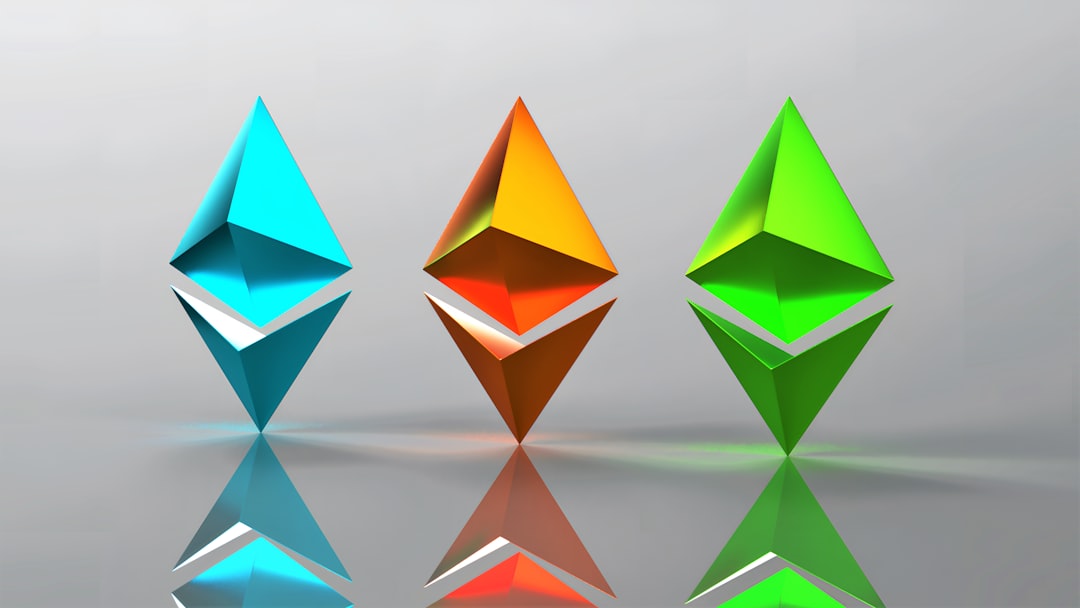Crypto art is an emerging genre of contemporary art that uses blockchain technology to create, sell, and trade digital artwork. It has gained significant popularity in recent years, and its growth shows no signs of slowing down. In this blog post, we will explore the world of crypto art, its definitions, origins, and the reasons behind its popularity. We will also delve into the challenges and opportunities of crypto art, and contemplate its future prospects and predictions, as well as how it will integrate with the wider art industry. Let us begin by defining what crypto art is and its origins.
What is Crypto Art?
Crypto Art is a new form of digital art that utilizes blockchain technology to authenticate and verify ownership, as well as provide a secure and transparent way to track transactions. Basically, it’s a way for artists to sell their digital creations and ensure that they are the original and authentic pieces.
The idea behind Crypto Art is not new, as digital art has been around for quite some time now. But with the advent of blockchain technology, the art world has found a new and exciting way to showcase and sell their work. The blockchain provides a way to solve the issue of digital art being easy to replicate and distribute without permission.
One of the ways Crypto Art differs from traditional art forms is that it exists purely in a digital form. This means that there is no physical object to display or sell, and collectors must ensure they have access to the digital file. This makes the verification of ownership and authenticity even more critical, as there is no physical item to authenticate.
The origin of Crypto Art can be traced back to the early days of Bitcoin, which was released in 2009. As blockchain technology began to gain traction, some artists began experimenting with ways to integrate it into their work. This led to the creation of Crypto Art, which has now become a popular form of digital art that is creating a buzz in the art world.
Overall, Crypto Art is a groundbreaking development that has the potential to revolutionize the way we view and purchase art. It is an innovative way for digital artists to showcase their work, and for collectors to own and trade unique digital pieces.
What is Crypto Art.
Why is Crypto Art Trending?
One of the main reasons for the current trend of crypto art is the emergence of blockchain technology. Blockchain, which is the underlying technology behind cryptocurrencies such as Bitcoin, allows for a secure and transparent digital ledger of transactions. This technology has been adapted for the art world, allowing for the creation of unique digital assets that can be bought, sold, and traded with verifiable ownership and provenance.
Not only does blockchain technology provide a more secure and transparent way of buying and selling art, but it also has the potential to decentralize and democratize the art world. With blockchain, artists can bypass traditional intermediaries such as galleries and auction houses and connect directly with collectors. This removes barriers to entry and allows for a more open and accessible art market.
Another reason for the rise of crypto art is the growing desire for unique and exclusive digital content. In a world where everything is available at the click of a button, people are seeking out experiences that are truly one-of-a-kind. Crypto art offers a way for collectors to own and display digital works of art that cannot be replicated or mass-produced.
Overall, the trend of crypto art is not just a passing fad, but a sign of the direction that the art world is moving towards. As blockchain technology continues to evolve and become more widespread, we can expect to see more artists and collectors embracing this new and exciting way of creating, buying, and selling art.
Who are the Key Players in Crypto Art?
Crypto art is a rapidly emerging field that is attracting a diverse range of individuals, institutions, and organizations. The key players in this ecosystem are artists, collectors, marketplaces, galleries, curators, and critics.
Artists and Collectors
The artists and collectors are the driving force behind the growth of crypto art. Artists are creating unique digital artworks using blockchain technology, which has opened new possibilities for creative expression. These artworks are verified and authenticated through the blockchain, which ensures their authenticity and provenance. Collectors are interested in buying these artworks for several reasons, including the potential for financial gains and the opportunity to support emerging artists.
Marketplaces and Galleries
Marketplaces and galleries play a crucial role in bringing crypto art to the masses. These platforms provide a marketplace for artists to showcase their work and for collectors to purchase them. Some of the popular marketplaces in the crypto art world include Nifty Gateway, SuperRare, and Rarible. Galleries are also taking an interest in crypto art and are organizing exhibitions to showcase these works.
Curators and Critics
Curators and critics play a crucial role in shaping the discourse around crypto art. Curators are responsible for selecting artworks and organizing exhibitions, while critics provide insightful analysis and commentary on the works. They play a crucial role in legitimizing crypto art as a serious art form and help in fostering its growth.
In conclusion, the key players in the crypto art world are diverse and represent a wide range of interests. Their collaboration is essential for the continued growth and development of this emerging field. As crypto art gains more mainstream attention, it will be interesting to see how these different players interact and shape its future.
Artists are creating unique digital artworks using blockchain technology, which has opened new possibilities for creative expression.
Challenges and Opportunities in Crypto Art
As with any emerging industry, crypto art is not without its fair share of challenges and opportunities. In this section, we’ll take a closer look at some of these issues and explore how they may impact the future of the crypto art world.
Legal and Ethical Issues
One of the biggest challenges facing the crypto art industry is the lack of clear legal guidelines. While crypto art marketplaces and galleries have emerged to facilitate the buying and selling of digital art, there are currently few regulations in place to protect artists and collectors. Furthermore, there are concerns around issues of intellectual property rights and ownership of digital assets.
Ethical issues have also come to the forefront in the crypto art community. Some artists have come under fire for creating non-fungible tokens (NFTs) that depict controversial figures or subject matter. As the industry grows and gains more mainstream attention, it will be increasingly important for artists and collectors to consider the ethical implications of their work.
Environmental Concerns
Another challenge facing the crypto art industry is the significant energy consumption required for the creation and trading of NFTs. Critics have pointed out that the high energy use associated with blockchain transactions can have a negative impact on the environment. Some artists have responded by exploring more sustainable alternatives, such as using renewable energy sources to power their crypto art creations.
Marketing and Promotion
While the crypto art industry has seen significant growth in recent years, there are still challenges associated with marketing and promoting digital art. Traditional art market channels may not be as effective in the digital realm, and artists may need to explore new avenues for reaching potential buyers. Furthermore, with so many different artists and marketplaces vying for attention, it can be difficult to stand out among the competition.
Despite these challenges, there are also numerous opportunities in the crypto art world. By harnessing the power of blockchain technology, artists and collectors can enjoy increased security and transparency in their transactions. Decentralization also offers the potential for a more democratic art world, where artists have greater control over the distribution and sale of their work.
In the next section, we’ll delve into what the future holds for the crypto art world.
Furthermore, there are concerns around issues of intellectual property rights and ownership of digital assets.
The Future of Crypto Art
With the skyrocketing popularity of crypto art, it is clear that its future is bright. As blockchain technology continues to grow and become more mainstream, we can expect to see even more innovations and developments in this new field.
One major aspect of the future of crypto art is the potential for collaboration and integration with other industries. We can already see how crypto art is merging with the gaming industry, as major gaming companies are creating virtual worlds where players can buy and sell digital assets using cryptocurrency.
Additionally, we can expect to see more collaboration between artists and developers, as blockchain technology offers new ways of creating and distributing art. One example of this is the rise of generative art, where algorithms are used to create unique, one-of-a-kind pieces of artwork.
Another important factor in the future of crypto art is the increasing use of non-fungible tokens or NFTs. These digital tokens allow for the creation and ownership of unique digital assets, including art, music, and even virtual real estate. As more and more people become familiar with NFTs, we can expect to see a surge in demand for crypto art and other digital collectibles.
Of course, with any new technology, there are always challenges and obstacles to overcome. One potential issue for the future of crypto art is the lack of standardization in the industry. As there are currently no established guidelines or regulations for selling or trading crypto art, there is a risk of fraud or other forms of exploitation.
However, as the crypto art market continues to mature, we can expect to see more standardized practices and regulations put in place. This will not only help to ensure the integrity of the art being sold, but also increase public trust in the industry as a whole.
In summary, the future of crypto art is full of exciting possibilities. With the potential for collaboration and integration with other industries, the increasing use of NFTs, and the possibility of more standardization in the industry, we can expect to see continued growth and innovation in this new field. As the art industry continues to evolve, embracing crypto art and its potential could be a game-changer for artists, collectors and the industry as a whole.
These digital tokens allow for the creation and ownership of unique digital assets, including art, music, and even virtual real estate.
Conclusion: Embracing Crypto Art and Its Potential for the Art Industry
In conclusion, crypto art represents a new and dynamic addition to the art world, with the potential to revolutionize the way we think about, value and trade art. Through the use of blockchain technology, crypto art provides greater security, transparency, and democratization, creating a new level of trust and accountability in the exchange of art.
The emergence of crypto art has definitely grabbed attention, with growing numbers of artists, collectors, investors, and galleries alike, looking to capitalize on its many benefits. As the art world continues to evolve and embrace new technology, the potential for crypto art to cause a seismic shift in the way art is collected, traded, and valued is huge.
While there are still some challenges that need to be addressed, such as legal and ethical issues and environmental concerns, the potential for crypto art to shape the future of the art world is enormous. The industry should embrace this exciting new development and seek to integrate the technology into the mainstream art world.
In the coming years, we can expect to see more innovations and developments in the crypto art space. Collaboration will be key as artists, marketplaces, galleries, and curators work together to advance the technology, foster greater adoption, and promote greater understanding of crypto art.
Overall, crypto art is an exciting and game-changing development in the art world, with the potential to transform the industry as we know it. Its emergence marks a new chapter in the evolution of art, as we continue to embrace and explore new technologies and opportunities.





